-
Posts
1,690 -
Joined
-
Last visited
-
Days Won
24
Content Type
Forums
Blogs
Gallery
Downloads
Profiles
Events
Posts posted by styopa
-
-
Orlanthi are Orlanthi and should look like Orlanthi.
Vikings are Vikings and should look like Vikings. Celts are Celts and should look like Celts. Same goes for Dark Age Germanic tribes.
Orlanthi shouldn't look like Viking, Celts, Angles, Saxons, Jutes, Frisians, Franks or whatever.
I appreciate that some people build up a mental image of what cultures look like, but my mental image of Orlanthi is of wild men with tattoos and trews, normally carrying a spear/sword/axe and shield.
So, Picts then? "Orlanthi should look like Orlanthi" (and nothing else!) but what you've just described is a bog-standard Pict:
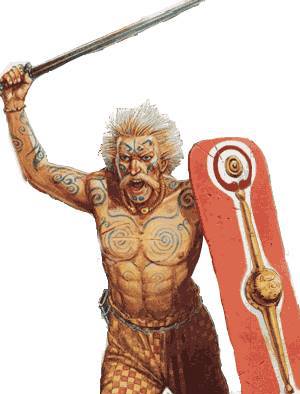
or maybe Cherusci:

I'm not attacking your particular vision, not at all. It just seems a little ironic to insist that Orlanthi look 'nothing like' (list of barbaric cultures) and then describe precisely one that's nearly identical.
Saxons/Vikings/Celts/Whatever: people generally like visualizations of the world they're playing; the nuances of distinction here might matter to some of us, but I suspect that you show that picture of the Mycenean Warriors above to 99% of American gamers, and they would say "oh, vikings!" (because of the quasi-horns on their helmets) anyway....
D&D is easy because it's such a (imo silly) caricature of an idealized medieval Europe (usually). We have a little higher bar, but hey, many of us abandoned D&D because wanted a better-realized world in the first place.
I think Martin's sketches - as much as they may not be canonical - are terrific. I'm adopting them. How far one needs to go down the rabbit-hole of canon is entirely subjective anyway, quadruply so in Greg Stafford's world....
-
This may sound weird, and not particularly easy, but if you want to see what I believe are terrific representations of Sartarite steadings and culture, play LOTRO and go to Rohan. Ignoring the overtly Equine symbology, IMO it nails it. I'll use screenshots from all over that game as "color" for my RQ campaign:
 Could easily be Dangerford, viewed from the North.
Could easily be Dangerford, viewed from the North.
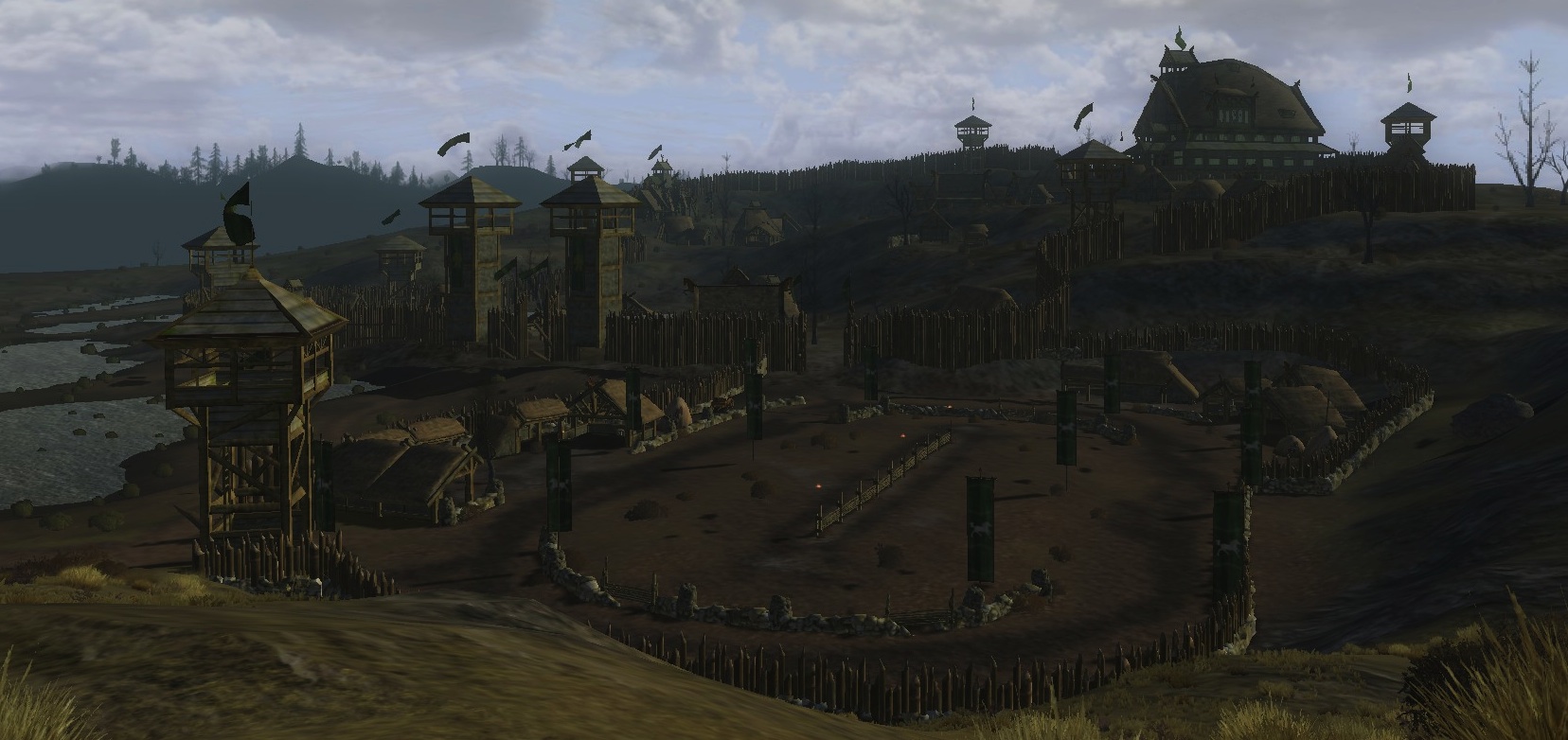 Could be an eastern view of Swenstown.
Could be an eastern view of Swenstown.
I couldn't find any pics online (if people want them, ill take a few and post them here) but close up the great halls, and the various houses are spot on:
(the closest I could find was concept art):

Another:
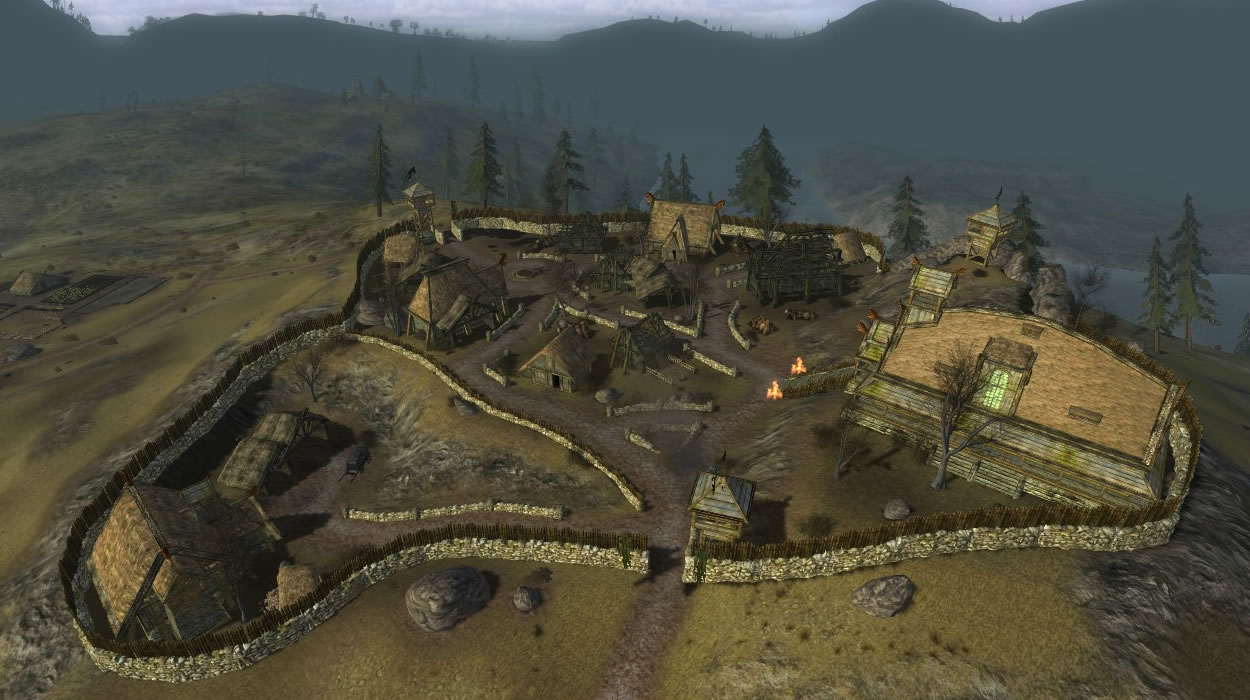
And finally (a little off the topic) this could be a great shot of wintertop from the Dwarf Run side (see the entrance)
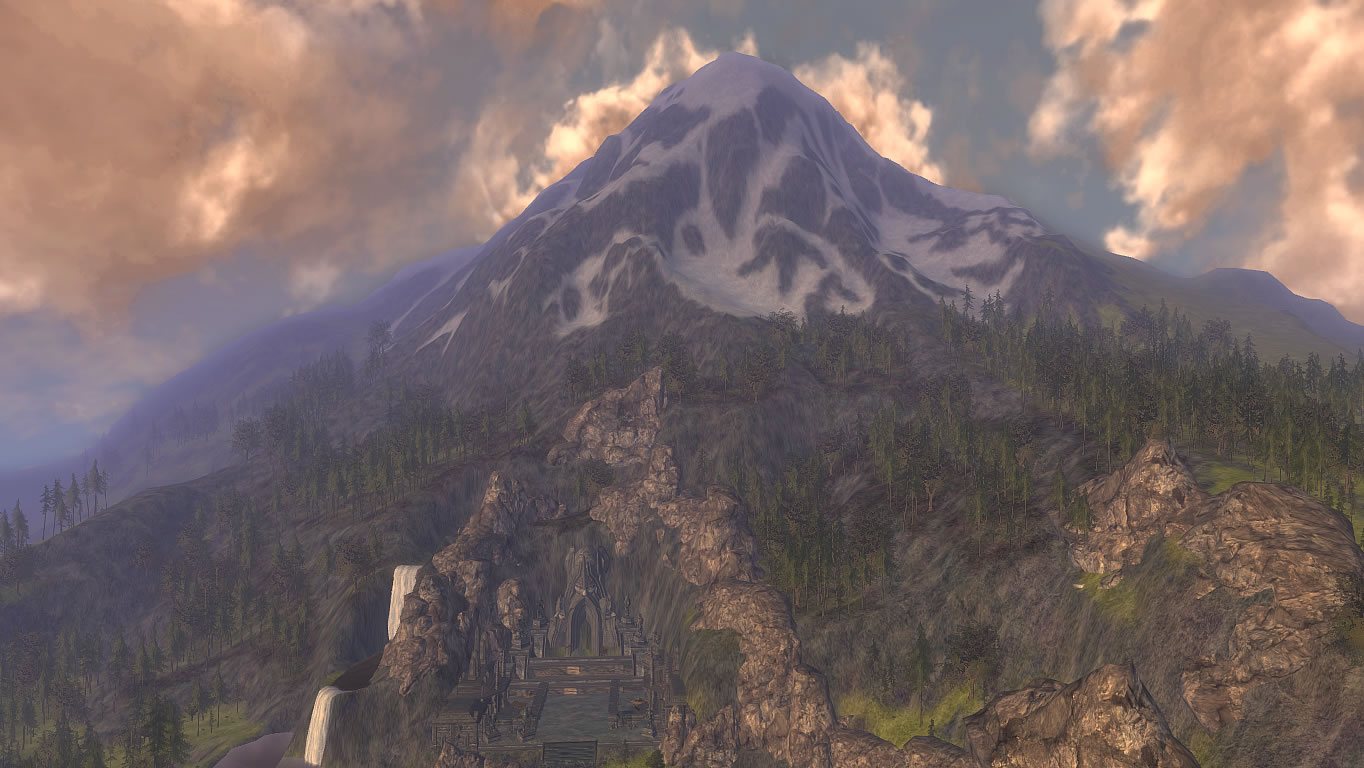
-
 1
1
-
-
On 3/18/2016 at 11:12 AM, g33k said:
But what's the co$t of one-off print runs like that? Can you really get a product that's just as high-quality (durable vs. use, non-bleeding, etc) at a comparable price?
It's a matter of who wants to invest in the machine, and what they're willing to cut the price down to. How many books printed over time to pay off the machine?
What's the "cost" and what's the "price" can be pretty different things. Cost is surprisingly, astonishingly low. Taking out the machine investment, the paper's about $0.80/lb for high quality uncoated fine paper, machine wear, ink, etc - can't be more than maybe $5/book, tops.
Early versions were pretty cheap perfect-bounds, but current grades are impressive.
-
Having seen the new print systems at the last Drupa show, it's clear that soon the production of a paper book in a run size as small as one will be trivial.
The all-in systems that go from literally a pdf on a usb to a warm book in your hand, full cover color & internal illustrations beautifully done just a handful of minutes later.
-
Well there's Debian RQ for power gamers, Ubuntu RQ for newbs, Red Hat RQ is a very nicely polished commercial version, etc.
-
 3
3
-
-
22 hours ago, Zit said:
I agree. I'm often getting lost in such discussions and give up before the end, but every one can integrate myths to the degree he wished. I sometime have the feeling that the PCs are supposed to be played as a kind of mystical exhalted derviches. I prefer playing the consequences of the myths on the mundane plane rather than playing the myths themselves. I runned as GM two heroic quests, both in the mundane world. It's all a matter of taste, but the publishers shall be carefull not cutting Glorantha away from less mystical and more real playing tastes. YRQWV

Yep, for us it boiled down to a few simple points:
- the much-more realistic combat was orders of magnitude more satisfying than D&D (initial hook)
- the skill system and classlessness was so much more intuitive (set the barb)
- a world that wasn't just medieval Europe with magic clumsily bolted on but not even faintly rationalized in terms of impact (not to mention religion; it's pretty important in the history of OUR world where miracles (if you believe in them) are pretty few and far between; how much more overwhelming a cultural force would religion be in a world where the gods are demonstrably immanent) and no alignments. (and...caught)
My main campaign ran for around a dozen years, more or less. Not one "heroquest" was done, but everyone had a great time. Every single player, however, has complained to me that they find it tremendously hard to move to other games. D&D5e is a good game, don't get me wrong, but once you've played RQ it sort of ruins you for for the compromises in other systems.
-
 1
1
-
-
I'm pretty sure the goal of RQ4 isn't just to re-issue RQ2 wholesale; it's to use the core concepts of RQ2, try to capture the feel of RQ2, but Jeff has also said that they will be adopting/implementing good ideas from the breadth of the RQ canon.
There are a lot of things in RQ2 that weren't perfect (it was what 1980? RPGs were still figuring out the fundamentals) and will certainly need to be 'updated' to a 2016 standard. I'd say the HP table is clearly one of them for all the reasons mentioned above.
-
On 2/27/2016 at 2:50 PM, skoll said:
I like it. It makes rune magic more usable while keeping an element of sacrifice to it.
I assume sacrificing your POW decreases it for good. Will there be means to increase it apart from the normal method of increasing stats?
I'd guess the usual POW gain rules apply (species max - current * 5% chance to go up 1d3 points), so yeah. Aside from actually-varying stats like HP and MP, POW has always been the most-variable of core stats.
I always DM'd that if your power gain roll was a result of core-cult functions (Storm Bull killing major Chaos, Humakti 'ending' a powerful lich, Ernalda saving a whole steading from starvation, etc) you could choose to either x2 your % chance to gain POW, or +2 to your actual POW gain IF you got it.
-
1) I very much like the "to reattach a limb you need a heal of the full hp of the limb". Simple. Brilliant. And does away with the archaic flat "Heal 6 needed" that was from the old days of non-scaling rules.
2) RQ has always suffered from check-hunting behavior. Simply saying "that's not what your character would do" simply shows that the rules fail to incentivize players to behave realistically: that's a RULES failing, not 'powergaming'. We came up with the following 'check-tick' system that still hewed reasonably close to RQ canon, but gave players enough incentive not to carry a golfbag full of different weapons for check-hunting. It might seem elaborate, but it's pretty simple in practice (from our campaign notes):
(Checks, Ticks, and improving skills): If you succeed at an ability, put 1 check by it; if you get a fumble or special success, 2 checks; if critical success, 3 checks. These checks will be used later for one experience roll on that skill, for each check. Further successes/fumbles/specials/criticals (s/f/s/c) add checks only if it’s an increase to what you had already. Otherwise, if you roll a (s/f/s/c) and already have checks to the appropriate quantity, you get the number of ‘ticks’ instead. Ticks will be used to enhance your experience rolls, so there is always a good reason to keep using a skill, even if you already have checks. All checks and ticks are cleared after the 'experience check' process; you cannot save them for later.
(Improving Skills) When the GM determines you’ve had enough rest to contemplate what lessons you may have learned, he may declare that it’s time to perform experience rolls. For each skill that you have a “check”, you get an experience roll. An experience roll is a % roll vs your current skill (base+modifiers, but NOT including your category modifier, such as Agility). Add your category modifier to the roll, if it exceeds your (base+modifiers), you have learned something and you may choose to add 1d6% (or 3%, your choice before rolling) to that skill. If you have multiple “checks” in a skill, you may perform multiple rolls sequentially. TICKS are used to improve your experience roll. Accumulated ticks may be spent:
Tick Cost
Benefit
1 tick
+1% to a specific designated experience roll (i.e. to make failure more likely) allocated before any rolls are made
4 ticks
+1 to a single d6 skill-gain roll, allocated after any experience rolls are made.
(You may buy as many of each as you can afford with the ticks you have in that skill; note that all unspent ticks are cleared anyway…)
For example: Rurik has an attack modifier of +8%, and a sword skill of 82% for a cumulative 90% chance to hit with a sword. In combat he succeeds, and notes a check on his character sheet next to his Sword skill. Later, he manages a special success, which would give him two checks, but since he already has one he only gets one additional check (now he has two), the other un-applied check is recorded instead as a tick. In a subsequent combat, he succeeds two times. Since he already has two checks, he cannot gain more from ‘simple’ success, so he gets two ticks instead. Finally, he fumbles – this again would give him two checks (yes, you hopefully learn something from huge mistakes….if you survive) but he already has two checks, so he gets two more ticks. Finally, when he gets back to town and is enjoying a celebratory ale, the GM rules he’s entitled to take his experience rolls. He has two checks, so he’ll get to roll twice. He has five ticks, so he needs to decide how to spend them. He chooses to spend them all (since he can’t keep them): one as a +1% to fail on his first roll (he must designate which when he spends the ticks, before he rolls), and four as +1 to the d6 for a skill gain roll. He rolls his first experience check. He needs to fail against 82% (note his attack modifier is excluded). He rolls a 76 adds his attack modifier of +8%, and another +1% for the tick spent = 85%, a failure! When rolling the +d6, he adds that tick skill modifier he bought, and rolls d6+1 for skill gain, rolling a 4+1 = 5. His Sword skill is now 87. He rolls a 12 for his second experience check, which is not a failure, and gets no skill gain. His checks and ticks are all cleared from his character sheet and he’s ready for the next adventure.
Yes, I know we were non-RAW as far as skill checks, rolling against skill without category mod, and then adding category mod to the roll. I wanted them to skill up relatively quickly.
-
 1
1
-
-
Personally, I've felt that canonical Glorantha sometimes goes a little TOO far 'down the rabbit hole' of exploring fantastic metaphysics and cultural minutiae. (I don't think the Glorantha Digest is still a thing, but you can probably find the logs somewhere and there you'll see in the 'dry years' that the narrow cadre of Gloranthaphiles spent MUCH energy arguing about figurative angels on figurative pins....).
You can role play joining cults and re-enacting the mythic meeting of Orlanth and Ernalda all you want; my players generally thought that was boring as hell.
So my longest-running campaign wasn't about that - it was dungeon crawls ("in Glorantha? WHAT?" cried the purists!) and killing bad guys and taking their crap to go kill more bad guys. Great fun.
-
 2
2
-
-
Formulae work better because they're not only better-scaling, but then it ALSO works for non-humaniform creatures.
RQ3 had a comprehensive list of body types, hit location (melee and missile to-hits) AND HP VALUES by location also conforming to the formulas generally.
Main body structures - chest, forequarters, etc - were 0.4
Secondary body or strong appendage - abdomen, legs - 0.33 (Head was here also; you might argue it's more like a secondary appendage size/durability wise, but it's also usually somewhat armored like in people. I'd also suspect there was some game-balance reasons for this, because head-damage was of SUCH lethal consequence)
Secondary appendage - arms - 0.25
Trivial appendage - legs on a spider - 0.1 and didn't count against body hp.
-
 1
1
-
-
While the Eyewitness books' layouts were visually interesting, let's not forget in the meanwhile that rulebooks are REFERENCE books too. Visually impactful is great, but if it hinders the basic usefulness of the text, I'm not sure that's the best direction.
-
 1
1
-
-
On 2/27/2016 at 6:22 PM, Mr Glorantha Pendragon said:
Hello All
Yes, MAR and I met several times at conventions. We got along famously. I once challenged him to a miniatures battle, the Lunar Army versus whatever Tekumel army he wished. All in good fun of course. Alas, he never took me up on it.
I did once have a friend who would spend every summer in an ashram. He looked at Tekumel for three minutes or so and said, "Oh, this is SE Asian mythology."
I used to think it was strange that someone would have gone to India and come home a muslim, but have since learned that India is the third largest muslim countries in the world, coming in right after Indonesia and Pakistan.
I've spoken to many people who played in his campaign, and they all said he was one of the greatest gamemaster they had ever gamed with.
"newbie"
(guffaw)
Thanks GS.

-
On 2/20/2016 at 3:47 PM, hkokko said:
The name is perhaps wrong - they used to be called combat maneuvres or something similar earlier I think. i think the happening frequency is just about right - they are taking the place of the specials, crits and fumbles from earlier editions. It also makes it necessary for players or opponents to parry or they endanger themselves to a SE - or they might go for pure attacks and truat that opponent does not succeed with SE. Puny opponents are mooks (rabble and underlings) - they cannot do SEs - there were some special effects which big opponents do not worry about...
Actually, they take place FAR more frequently in RQ6.
Consider a fight between 75-skill combatants.
In RQ3, each has a 15% chance of crit/specials and 1% of fumbles. So 16% chance of 'something' happening to each, or (with the two of them fighting) adding probability, roughly a 32% chance of "something" happening. Now, there's a bit of a cancellation effect with some crit vs crit results, and a critical parry or dodge vs any attack isn't a special effect, simply nothing happens. Call it somewhere around 25% chance of something happening, up to maybe 30%.
Contrast that with RQ6, where (p143: "...any resulting difference in success levels indicates an opportunity for Special Effects to occur..."), increasing crits to 10%, removing specials, and increasing fumbles to 2% means the math's a little more difficult but as I calculate out of 10000 possible results, more than 48% of them are where one or the other has at least one level of success over the other. (We always said that you had to at least succeed to get an SE, but that doesn't materially affect that 48% actually...)
That's a HUGE difference. Not only does it impact frequency of what might be a combat-ending event, but it also might mean that every other combat action someone's got to scurry off and check the table.
Unless my math's off, which isn't impossible.
-
 3
3
-
-
I'm curious if Greg and MAR Barker ever crossed paths?
Both men developed elaborate fictional universes leading up to the 1970s with comprehensive mythologies etc that were entirely divorced from the rather-pedestrian Tolkienesque canon.
Both men worked on developing role playing rules to experience these worlds (RQ for Glorantha, and EPT for Tekumel).
Tekumel is a fascinating world (frankly, I used Sandy's Tekumel stuff as my "Western Magic" fodder, worked great), I'm curious if these two minds ever encountered each other? Seems like they'd have had a lot to chat about.
-
 1
1
-
-
Then again, I might have just been JOKING a little Loz.
-
On 1/17/2016 at 7:44 PM, SDLeary said:
IIRC, this is something that was resolved in the RQ Companion. And I don't think it was restricted to spears, but for all 2h weapons. I believe you could attack and parry in the same round, but not on the same strike rank, so if actions were simultaneous, and both connected, both were screwed. Alas I am not sure as I don't have anything to hand.
SDLeary
Curiously, no, I just skimmed the RQ2 rulebook pretty closely, and didn't see ANYTHING explicitly mentioning the 1h thing=attack or parry, 2h thing=attack AND parry rule. Been using that one myself for 30 years, maybe it was clarified in RQ3? Don't have those books handy.
-
On 2/21/2016 at 7:28 AM, lawrence.whitaker said:
We commissioned an extensive and thorough trademark and usage search by specialist IP and trademark lawyers, so yes.
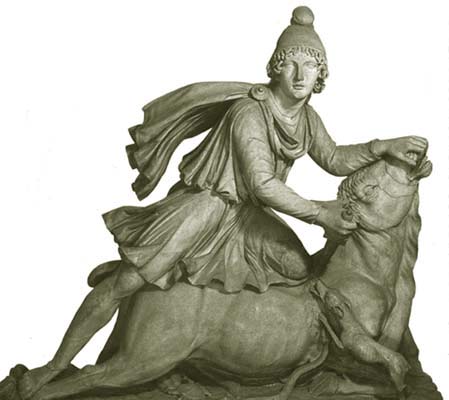
"You didn't look hard enough"
-Mithras
-
41 minutes ago, hkokko said:
In my game I see many being used with more being used by more tactical gamers - trip opponent is very common as it is very useful, when you are down, you will end up being in world of hurt, press advantage is also a nasty one and used too often, compel surrender very effectively, disarm opponent sometimes, overextend quite often, bash sometimes, impale often. If they get the criticals then bypass armor, choose location, maximise damage, force failure all come into play, often in nasty combinations. Only one that got boring was choose location so I made a house rule of having it available only in critical.
Meh, I think "trip" and some of these others were artifacts of the extraordinarily punishing nature of SEs in RQ6...the benefit of special effects was so radical that it paid to pursue them intrinsically. I just found them happening far, far too frequently in every combat (we joked that they should be called CE's: "common effects"). It also made it trivially easy for a couple of relatively puny combatants to lock down a much better fighter...inordinately so, in my book.
-
I think jux has some great points.
The unique situation for Glorantha is that while most fantasy games have to also present "the world" to the players, Glorantha already has The Guide which is as staggeringly comprehensive as a fictional world can be. So Chaosium has the opportunity to be able to present a rules system with a fairly minimalist setting background, knowing that the rest is out there if people want it, already.
-
My goodness, I don't think I'm smart enough for this forum software, or it hates Chrome.
Anyway, replying to Hannu's comment:
" We had many. It is relatively easy to get to Rune level if you play for awhile even if you start as lay members. if you start as novices it will be faster.... "
Then clearly your combat isn't lethal enough. /joke.
I'm kidding of course; considering the RQ3 requirements were typically something like 90% in ~5-7 skills, which is about 50-55 skill checks (with +1d6 on successful check)
(Interestingly, starting at a skill of 25, with no stat modifier, it's 55-65 rolls. Starting at a skill of 50, that only drops to perhaps 45-50.)
How long in your campaign would it take for your players to get 50 checks in 5-7 key skills? Once my players decided what they wanted to be, they were acutely conscious of focusing on those skills, of course, meaning they were ALWAYS trying. Basically, in those key skills you could count on them having a success every time they had an opportunity to resolve skill checks, so they'd get anywhere from 1-3 skill checks per key skill per play session. So that's only about 20-25 play sessions to Rune Lord candidacy? A real life year, meeting 2x monthly? It's a while, but not a terribly LONG while, IMO.
(IMG it wasn't 'automatic' that you hit 90% in those skills, you got to be a RL. I said they could TRY for RL whenever it was contextually appropriate, but some cults only gave you 3 tries, for example, or other cults required a massive donation and significant service to be considered. And if RAW the cult required "90% skill in bow and arrow" I didn't care what their character sheet skill % was...they simply had to demonstrate to the Priest in a ritualized ceremony that they could successfully arrow "...9 of the 10 totems representing enemy tribes..." or whatever.)
-
 2
2
-
-
22 hours ago, Steve said:9 hours ago, hkokko said:
We had many. It is relatively easy to get to Rune level if you play for awhile even if you start as lay members. if you start as novices it will be faster....
-
I think the 'dullness' of high level combat is true, if a teensy bit overstated. Then again, it seems fairly 'real life' reasonable that two master combatants would be evenly matched and could trade blows for an inordinate amount of time.
In application though, how often did these combats occur in such a context, where one or the other (or both) combatants didn't have some 'other' thing going, like powerful magic or friends? A melee duel at those levels of expertise in Glorantha without substantial magic in play is nearly inconceivable.
That said, I definitely expect that one of the things they're going to take from RQ6 is the special effects. I very much disliked how common they were and how RAW unbalanced they could be, but the combined principles of a: to every exchange there's someone who wins, and this win can be directly translated into some sort of advantage (even slight), and b: special effects are driven by character choices thus adding another level of interest in the interplay of combatants - both of these NEED to be included.
I'm a simulationist; I don't want my combats to look like Crouching Tiger SFX scenes. But I realize that some people do want exactly that. The special combat effects is a great mechanic as well to give to a DM to 'dial up' or 'dial down' the fantasticness of such scenes.
-
On 1/17/2016 at 10:35 AM, soltakss said:
We played that it took no extra SRs to cast, as it is a Divine Magic spell.
It also makes it slightly better than Heal, which does cost SRs to cast.
It is good when stacked with Cure Chaos Wound, as that will provide all MPs for the spell, so cures wounds of any size.
Yep, this is how we ruled it: It was a Divine Magic spell, essentially, ergo 1sr. It enables essentially a 'flash heal' but of course, costs a divine spell.
-
 1
1
-




Spanish Article on Mythras/RuneQuest Classic Fantasy
in Mythras
Posted
Of course, there's the internet...
https://translate.google.com/translate?hl=en&sl=es&tl=en&u=http%3A%2F%2Fpxmagazine.com%2Fsobre-classic-fantasy%2F
(translated version)